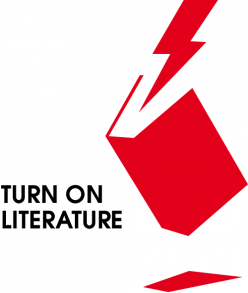At the 2017 Electronic Literature Organisation conference in Porto, there were at three different poetry machines presented, which all had a written output:
The poetry machine from the Turn on Literature project, the Trumpet of the swan and the Intimate fields project.
The Trumpet of the swan uses President Trump’s tweets. With a drawing robot it writes Trump’s tweets with ink onto a continuous scroll of paper. The paper is automatically fed into a customised paper-shredder which then makes the written tweets into confetti. Here is an early prototype of the machine:
Trumpet of the swan, 2017 (Working Prototype)
You can read more about the project and the author in the ELO conference book (page 108). Another E-lit work that uses the President’s tweets is Real Press Sec. which turns every tweet from President into “official” press statements. The new and official-looking statements are re-tweeted, here’s an example:

Many of President Trump tweets are bizarre, like the one above where the most powerful man in world says he needs to rely on social media to get “the truth out”. And as we now are accustomed to, the President brags about how many followers he has. When shown in another context, the absurdity of many of the President’s tweets becomes more present. Both of these projects are questioning the communication strategies of the new President and the new administration. The change of context can be seen as a political critique and digital literature is probably the only literary genre, where the medium it self sometimes , literary is creating the message .
Also the Turn on Literature poetry machines are made with a clear intent. The machines are intended to function as an introduction to digital literature, and therefore the poetry machines embodies key concepts of digital literature. The texts are written especially for this project (born digital).The users interact with the machine with old books as remote controls, and the users are producing unique poems in collaboration with the authors and the machine.

The third project, Intimate fields , combines the old literary genre of posies ( a brief motto or inscription, especially one on a trinket or a ring) with modern technology like near field communication (NFC) and a printer. You place a ring or another NFC-enabled object on the NFC-reader (the red module in the picture) and then a posie will be printed. The posies are also tweeted, here are the project’s twitter account .

The picture is from the project page: https://hyperrhiz.github.io/intimate-fields/abstract.html
It’s interesting to see how electronic literature can revamp old literary traditions. In the Turn on Literature project one of the authors also uses an old poetic tradition in a new environment. Ursula Andkjaer Olsen uses the old Malayan poetry form Pantoum , which repeats verse lines in a particular pattern.
Another very interesting literary machine that came to our attention, though not presented at the ELO-conference, is the French project Short Editions , which publishes short stories online. There is also a short story vending machine. The machine has three buttons, and with a single press on a button you can receive a one minute, three minutes or five minutes printed short story. Nearly 7000 authors have contributed with online texts and the best (and shortest) are selected to the vending machine.
Here is a video of a Short Edition vending machine in USA, ordered by film director Francis Ford Coppola:
As the authors say in this short presentation: “Our aim is to adapt literature to the modern world!
